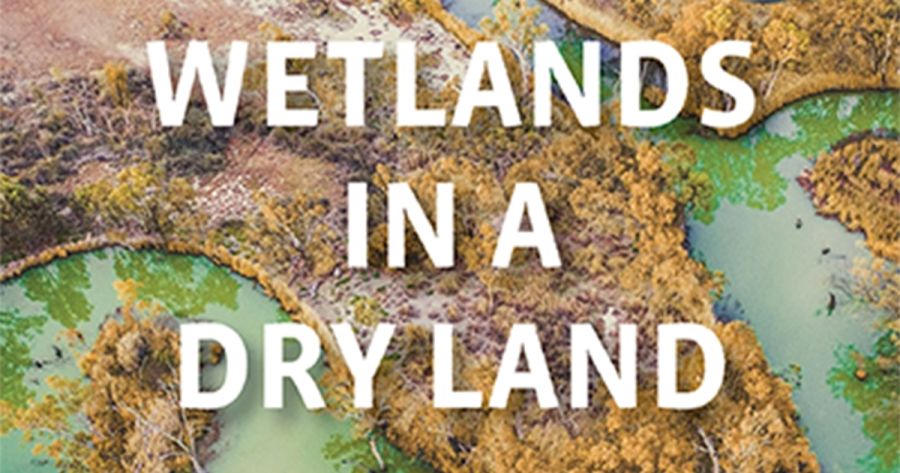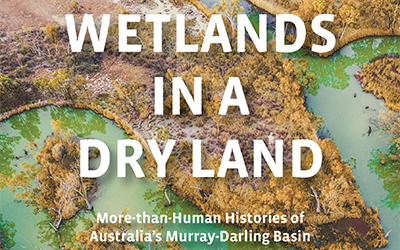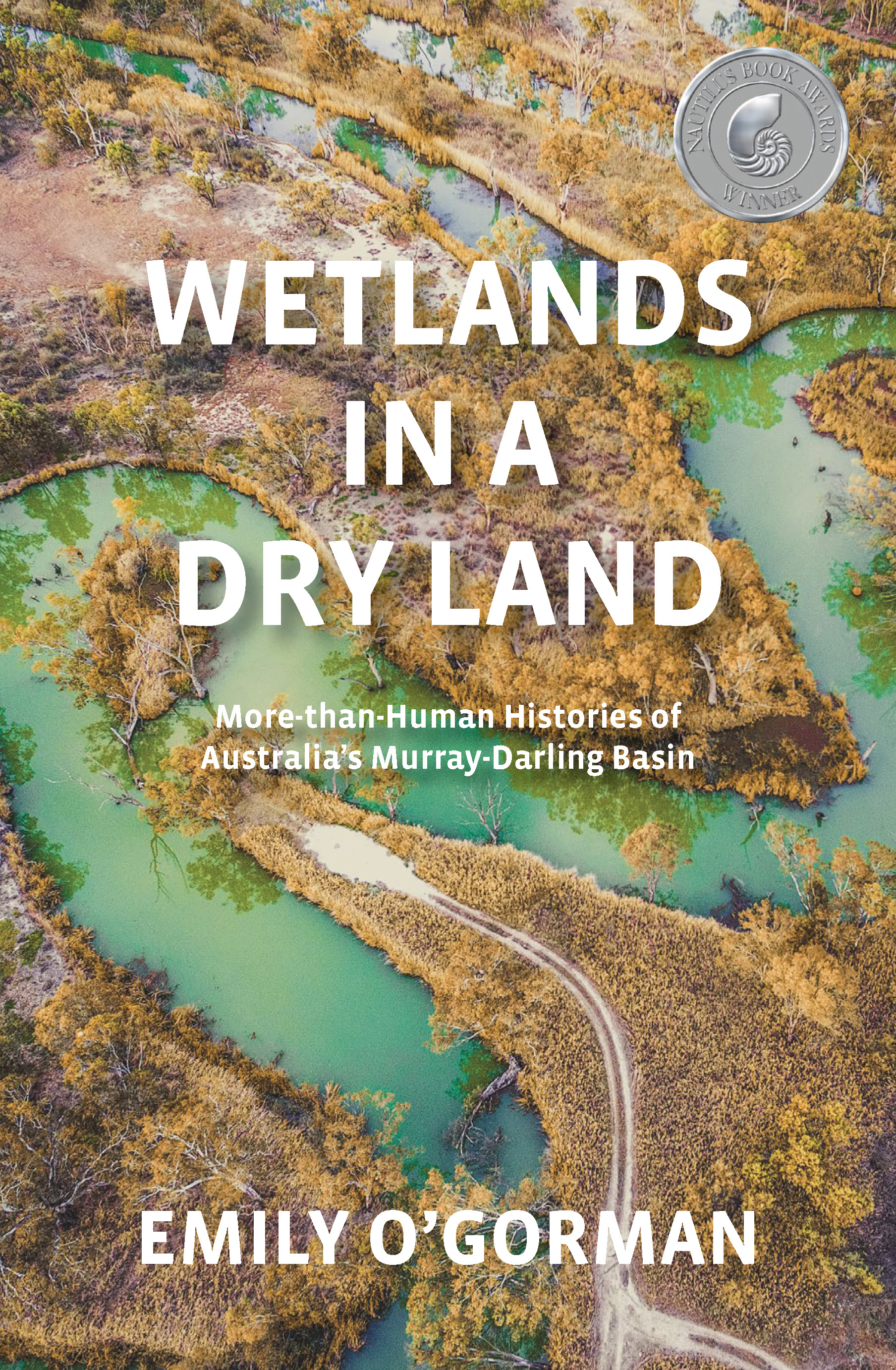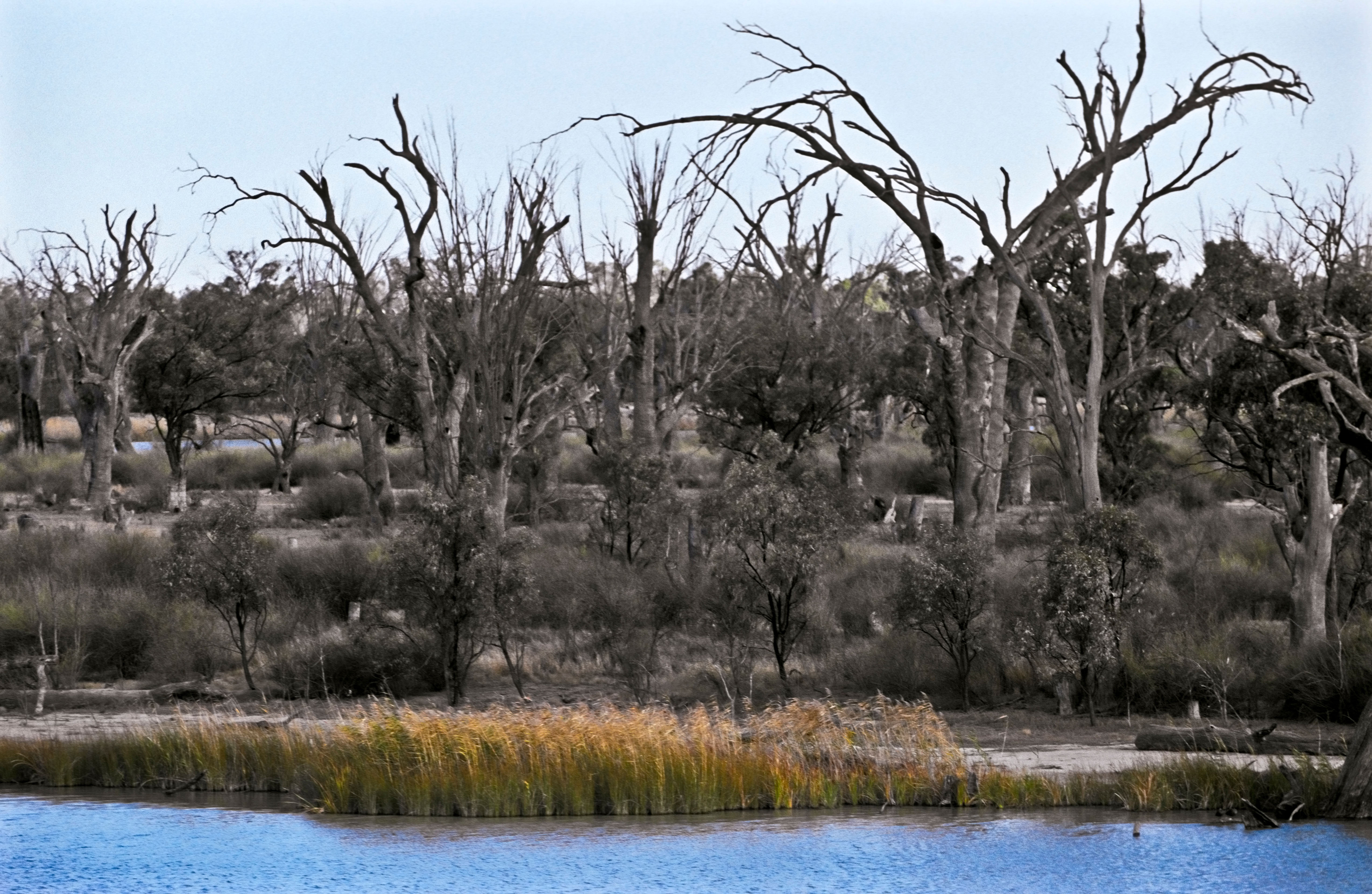
- Free Article: No
- Contents Category: Environment
- Review Article: Yes
- Article Title: Whose wetlands?
- Article Subtitle: Entangled histories and hybrid geographies
- Online Only: No
- Custom Highlight Text:
The Iranian city of Ramsar, overlooking the Caspian Sea, was the site of a meeting that brought together delegates from around the world at the beginning of 1971. The meeting was held to determine the future global management of the world’s few remaining wetlands, vital habitats for transnational migratory bird species such as Latham’s Snipe (Gallinago hardwickii), which fly annually between Australia and Japan.
- Featured Image (400px * 250px):

- Alt Tag (Featured Image): Harrison Croft reviews ‘Wetlands in a Dry Land: More-than-human histories of Australia’s Murray-Darling Basin’ by Emily O’Gorman
- Book 1 Title: Wetlands in a Dry Land
- Book 1 Subtitle: More-than-human histories of Australia’s Murray-Darling Basin
- Book 1 Biblio: Melbourne University Press, $39.99 pb, 288 pp
- Book 1 Cover Small (400 x 600):

- Book 1 Cover (800 x 1200):

In 2020, O’Gorman co-authored an article with environmental historian Andrea Gaynor for the academic journal Environmental History. That article laid out some of the theoretical applications and possibilities for the emerging field of more-than-human histories. Building on that experiment, Wetlands in a Dry Land presents the first more-than-human history in Australia. O’Gorman’s study shows what more-than-human history can be. Tracing multiple species across multiple places and multiple timescales, she shows the vast and complicated Murray-Darling Basin as a co-constituted site, imbued with differing and sometimes opposing meanings, and resisting easy classification. Written with a deep compassion for the sites at the centre of her study, Wetlands in a Dry Land sheds new light on a highly contested space.
O’Gorman has also embedded the knowledges, practices, and experiences of the First Nations peoples on whose Countries the wetlands in her study are situated. These offer insights into the past and future uses and configurations of the wetlands and their more-than-human networks. In Chapter One, O’Gorman considers Wailwan women’s use of sedges and reeds for weaving. The interviews that bolster her argument reveal diminishing sedge and reed health since the 1960s, as cotton farms have been established at the Macquarie Marshes.
The reeds that grow at the Macquarie Marshes, in north-central New South Wales, provide the materials for traditional basket weaving practised by Wailwan women. Through their stories, the book elucidates plant politics. While the reeds depend upon water that is used by irrigators upstream, the basin’s rice and cotton growing industries put serious limits on the growth of the Macquarie Marshes reeds through their intensive use of the rivers’ water for their own crops. By bringing the reeds to the centre of her work, O’Gorman demonstrates how the Wailwan women’s weaving practices constitute care for Country, and how this is threatened by climate change and poor government prioritisation.
This study also foregrounds race, class, and gender. The economic success of Australia’s rice industry – and all its attendant ecological catastrophes – was partly built on racist narratives that cautioned against the White body’s susceptibility to unhygienic rice growing conditions in Southeast Asia. As O’Gorman shows, the country’s Rice Marketing Board weaponised interwar middle-class fears around Australia’s geographical vulnerability to market water-intensive product as clean and hygienic. But droughts, ducks, and mosquitoes all complicate the multiple histories of the wetlands as they assert their own agencies. By drawing attention to these non-human historical actors, O’Gorman richly layers the Murray Darling Basin with disparate meanings. The otherwise hard striations formed by the boundaries of rice fields constitute a harsh division between flooded paddies and drier edges, easily disrupted by ducks.
 Devastated wetlands along the Murray-Darling Basin (Jason Edwards/Alamy)
Devastated wetlands along the Murray-Darling Basin (Jason Edwards/Alamy)
Elsewhere, the transnational migratory patterns of birds like Latham’s Snipe tie together Australia and Japan. Harry Frith was the chief of CSIRO’s Wildlife Division in the 1970s when Australia’s first Ramsar site was selected. Frith was instrumental in determining the chosen site, and the visiting birds were instrumental in guiding him to that choice. Through this and other examples across the basin, O’Gorman shows how these places are layered with meaning through human and more-than-human networks.
First Nations perspectives are also retold in the final chapter, complicating the historical and current relationships between pelicans, seals, Ngarrindjeri, and scientists. The place of fur seals in the lower reaches of the river system is hotly debated, and O’Gorman carefully lays out the arguments of each community. Fishers are frustrated by the playful young seals who routinely puncture their nets. Ngarrindjeri despair at the seals who kill pelicans, with whom some hold close kinship relationships. Biologists suggest the seals are merely reclaiming territory they inhabited prior to the establishment of the devastating sealing industry spanning 1790 to the 1830s. What seal territory means has real life and death consequences for the seals, and for the birds and fish they eat, for the fishing industries and all human-non-human networks which they enter.
The book comprises seven chapters, each focusing on a different multi-species network at a different time in history and a different site along the Murray-Darling Basin. Despite the massive size of the basin and the risks inherent in trying to present so vast a place, depth of analysis is never sacrificed for breadth of study. When these chapters are brought together, they speak to the complexity, diversity, and contingency of human and non-human life in the basin. That contingency was brought into stark relief in 2020 when a drought event exacerbated by climate change caused more than one million fish to die, a catastrophic ecological event which O’Gorman explores in the book’s closing pages.
With Wetlands in a Dry Land, O’Gorman gifts an impressive template for what more-than-human histories in Australia can look like. The gentle narrative provides appropriate context for the politics that imbue the study. Each of the seven chapters forms a vignette, a localised study. But when viewed as a whole, they form a complex weave and present a compelling history of the Murray-Darling Basin and the communities comprising it. With Wetlands in a Dry Land, O’Gorman challenges us to consider what counts as a wetland, and for whom?


Comments powered by CComment